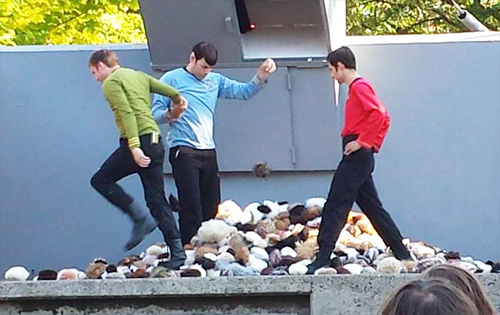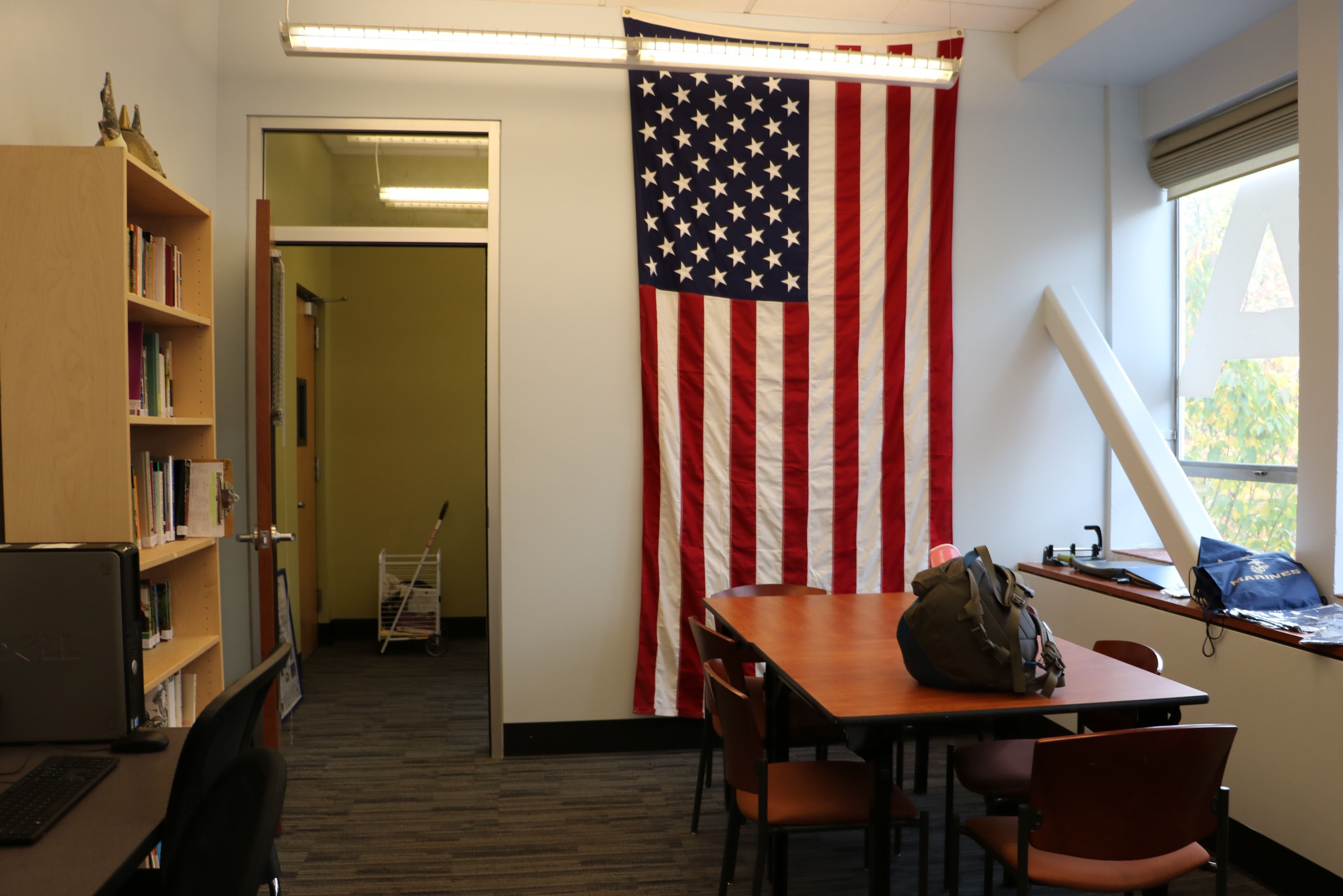Captain’s log, Stardate 91193.96. We have encountered a humanoid species gathered at the Cathedral Park amphitheater. The inhabitants of the green terrestrial sphere are collected to take part in what the people of Earth call a “play.” I, as the ship’s commanding officer, will observe this ritual to better understand this planet’s life-forms.
Set phasers to stunning

Captain’s log, Stardate 91193.96. We have encountered a humanoid species gathered at the Cathedral Park amphitheater. The inhabitants of the green terrestrial sphere are collected to take part in what the people of Earth call a “play.” I, as the ship’s commanding officer, will observe this ritual to better understand this planet’s life-forms. For that is my mission: to explore strange new worlds, to seek out new life and new civilizations, to boldly go where no man has gone before.
Trek in the Park: The Trouble with Tribbles
August 10–11, 17–18, 24–25 at 5 p.m.
Cathedral Park amphitheater
410 SW Kingston Ave.
Free and open to the public
My field observations are as follows.
The aforementioned play is presented by local acting group Atomic Arts, founded in 2009 by siblings Amy and Adam Rosko. The troupe is now in the fifth and final year of its live adaptations of classic Star Trek episodes. In their four summers dominating Portland’s park theatrics, “Trek in the Park” has performed Trek series favorites “Amok Time,” “Space Seed,” “Mirror, Mirror” and “Journey to Babel,” becoming a staple of local summer entertainment in the process.
Now, for their final voyage at the helm of the Starship Enterprise, Atomic Arts takes on the beloved fan favorite “The Trouble with Tribbles.”
In “Tribbles,” Captain James T. Kirk and the crew of the Enterprise travel to Deep Space Station K7 to protect a shipment of quadrotriticale (don’t make the mistake of calling it wheat), destined for the nearby planet, from any Klingon interference. On the station, a shifty rare-goods merchant gives Lieutenant Uhura a tribble—a small, furry, cooing breeding machine with a 12-hour reproductive cycle—putting the fate of the Enterprise and the space station in jeopardy.
The show is about the story and the people, and the cast is where it truly comes alive. “Trek in the Park” co-founder Adam Rosko stars as the cool and confident Captain Kirk. He accurately portrays the suave charm that defined Kirk, but without the smarminess William Shatner brought to the classic role. Donning the yellow shirt, Rosko sells the show with his witty and calm command. Jesse Graff, who plays Spock, has mastered the icy-cold logic of the pointy-eared Vulcan first officer. When the two share the stage, they capture the chemistry of the dynamic duo—the bickering, the banter, the charm—and make it their own on the park stage.
The rest of the cast is equally impressive. Ryan Castro’s Pavel Chekov, Nate Ayling’s Scotty, Jake Street’s Dr. “Bones” McCoy and Dana Thompson’s Nyota Uhura all deserve praise. Rather than rehashing decades-old roles, the group comes together to respectfully transform the classic characters in a style that is both fresh and unique.
“Trek in the Park” stays true to the campy charm that defined Gene Roddenberry’s original Star Trek series. No situation is too dire, nothing is too dangerous, and death and defeat are laughed at (unless you’re a Red Shirt; then you’re screwed). The production excels at embracing the vibe and tone that made the television series so successful, at the same time transforming its style and presentation to perfectly suit the outdoor environment.
The approach is minimal. The stage is the environment; other than three walls bearing the ship’s serial number, NCC-1701, the sets exist in the imaginations of the viewers. Props consist of office chairs and tables; the most intricate is Captain Kirk’s command chair. The costumes worn by the noble Starfleet crew and the notorious Klingons are made with the affectionate touch that could only mark the loving work of a Trekkie.
It’s all very simple, but, in a way, that’s what “Trek in the Park” is all about. It’s not about being a big production with the lights and glamour typical of theater. It’s about a dedicated cast and crew with a love for Star Trek putting on the best damn show they can and sharing their favorite stories with their fellow Portlanders.
At heart, Star Trek has always been about unity. It’s about diverse groups of people banding together to overcome overwhelming odds; to meet evil, oppression and wrongdoing with truth, understanding and acceptance.
This year’s production stays true to that theme. Local businesses joined together, providing the support and funding to make “Tribbles” happen. That doesn’t begin to cover the behind-the-scenes work that made the actual creatures come to life. Cast, crew and community members poured forth supplies and hours of hard work and dedication to create the hundreds of furry tribbles used on set. Seeing them onstage is not just an impressive example of what happens when people come together for a common goal, it’s also inspiring. Without the crowd-sourced creatures, there’s no way the production could have properly presented the threat posed by the little fuzz balls—or sold the show at all. It may seem minor, but then Star Trek has always taught us how important the little things are.
This is your commander signing off. Just as the voyage of the Starship Enterprise is a five-year one, the “Trek in the Park” journey is also coming to an end (in fact, the park plays outlasted the television series, which only ran for three seasons). The destination is the unknown, the uncharted. Atomic Arts productions will continue in a different form, but the days of “Trek in the Park” are nearly over. Enjoy it while you still can. And remember, live long and prosper.






